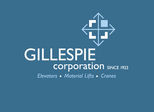- Glenn Siegel
- Oct 2, 2018
There is much that has to go right for a concert to be successful. Some elements, like developing a cohort of talented and motivated instrumentalists, takes years. Often times, it also takes a little good fortune. Such was the case on September 27, when the Angelica Sanchez Nonet kicked off the 30th annual Magic Triangle Jazz Series at the University of Massachusetts, Amherst.
Sanchez, who has been a fixture on the New York jazz scene since relocating from Arizona in 1994, has developed deep musical relationships with some of today’s finest improvisers. Eight of them: Thomas Heberer, trumpet, Kenny Warren, cornet, Chris Speed, Michaël Attias, Ben Goldberg, reeds, Omar Tamez, guitar, John Hébert, bass and Sam Ostpovat, drums, played her intricate, open-ended compositions with élan and conviction on Thursday.
With the exception of Warren, who recently joined the band in Kirk Knuffke’s absence, the musicians have been chewing on most of these pieces for over a year. (Sanchez added three new works for this three-concert tour.) After the show, Sanchez and Tamez agreed the band has now reached a new level of comfort with the material, not only improvising on written themes, but taking license to add new ideas to the compositions themselves. In Sanchez’ view, that is a good thing. I’m sure the band rapport only grew during their final “hit” at Firehouse 12 in New Haven on Sept. 28. The plan is to document and release that effort.
As well prepared as one hopes to be, presenters must sometimes travel by their pant seats. Midway through the set, a malfunction in Tamez’ Fender Ultimate Chorus amp started producing an unwanted buzz. When the guitarist’s swift kick did not solve the problem, Sanchez suspended activity while intern extraordinaire Ben Powell retrieved his smaller, more reliable Fender Super Champ amp from his locker. It arrived in time for Tamez to take an extraordinarily beautiful unaccompanied solo to begin “Ring Leader.” Full of whispered, glistening tones, his introduction held 140 rapt listeners in an unhurried state of bliss.
Powell first saved the day at sound check when it became clear that the modest Ampeg-10 bass amp we provided Hébert would not be up to the task of powering this size ensemble. One of Powell’s UMass classmates graciously provided a grown-up amp, and all was saved. As a result, Hébert was easily able to anchor the band, projecting a sturdy bottom, heard and felt throughout Bezanson Recital Hall.
After the show, the subject of generosity came up. Sanchez talked about the gratitude that comes when serious musicians engage seriously with your ideas. While talking of the great lineage of Denver trumpeters (Kenny Warren is from there), we were told a story of Ron Miles giving his student, Kirk Knuffke, his $15,000 Monette cornet, the only stipulation being that he would play it. Omar Tamez, a wise soul if ever there was one, told us that Kenny Burrell gave him the guitar he played with John Coltrane. Tamez has taken good care of it, and will pass it on when the time is right.
Sanchez is fierce without being loud. In her writing, and her playing, she claims an enormous amount of sonic territory. Her pieces exist between moods and time signatures, in a constant state of becoming. Despite the size of the ensemble, Sanchez carved out ample opportunity for solos and small group interaction. Except for alto saxophonist Michaël Attias and drummer Sam Ostpovat, all the band members have performed in the area in the last three years. All players played.
I agreed with Amir ElSaffar, who was in attendance in advance of his own UMass concert the next evening, that as the night went on the music deepened, grew into itself.



























